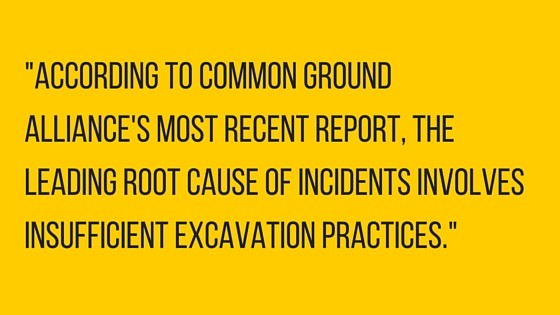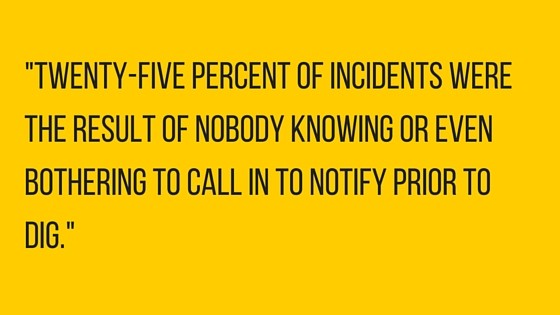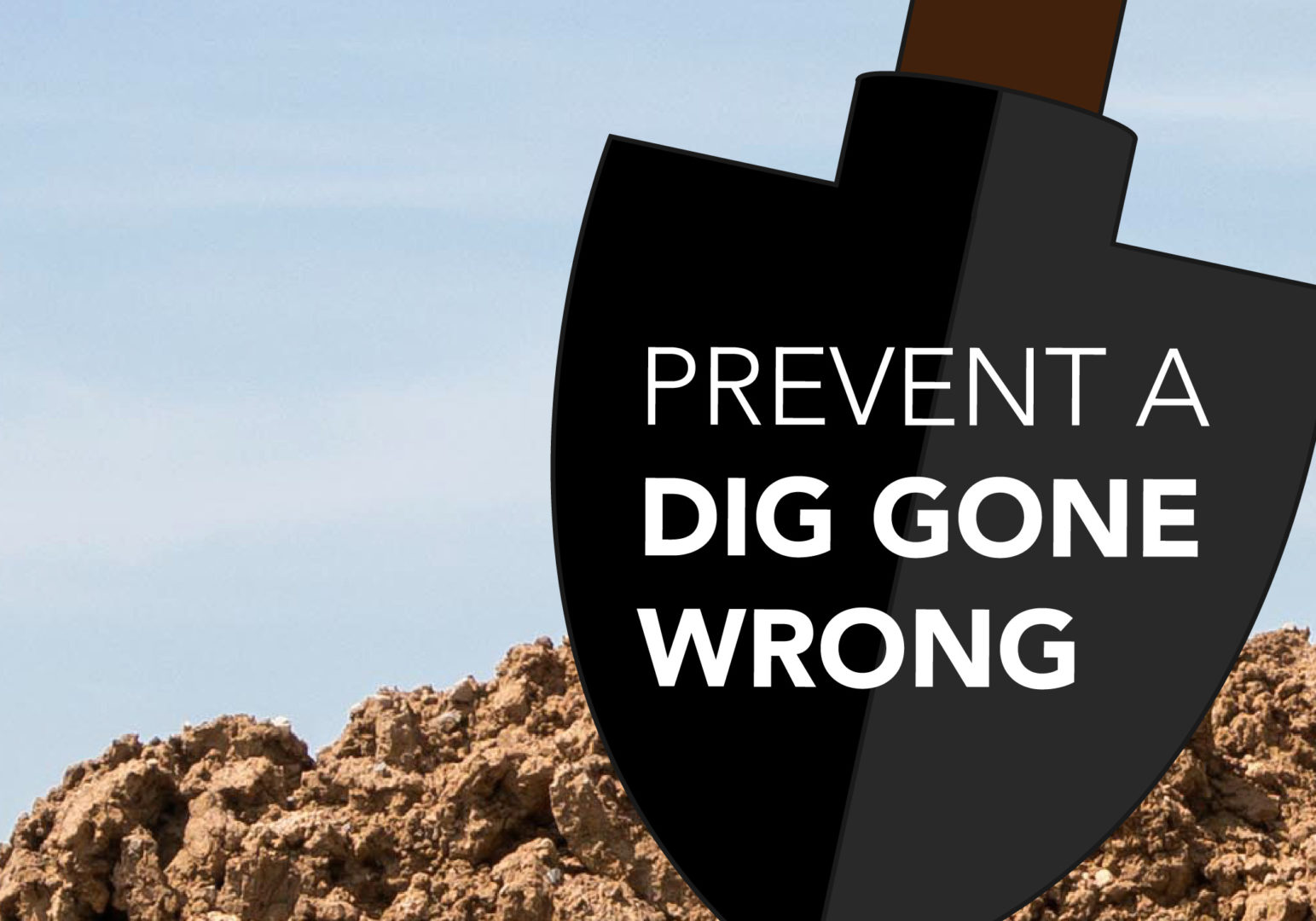Did you know that every year, an estimated 500,000 – 600,000 incidents damage underground utilities? That is roughly one utility hit every minute. As National Safe Digging Month draws to a close this April, it is the perfect time to think about safety completing spring construction projects involving ground disturbance.
Although an alarming number of incidents occur every year, most do not cause any damage or widespread interruption of services. However, some are serious enough to cause outages disrupting entire neighborhoods and sections of cities – and that’s not even the greatest cause for concern. Accidentally hitting a buried power line can result in serious injury or death. Rupturing a high-pressure natural gas pipe can result in an explosion. Ensuring you are digging safe on a project is not supposed to exist as an inconvenience, it is to protect you and your teams’ safety. Luckily, there are easily accessible resources available that provide information on hidden underground utilities you should check out before you start digging on any project.
The Common Ground Alliance is made up of individuals, organizations, and sponsors from every facet of the underground utility industry. They have developed the Damage Information Reporting Tool (DIRT), which provides a method for collecting damage data on a national level that is used to analyze root causes of damages, conduct trend analysis, and assess educational programs.
According to their most recent report, the leading root cause (roughly half of the incidents) involves insufficient excavation practices. Given this information, contractors have put considerable effort into reducing the risk of incident, providing trainings to operators and designing specific ground disturbance programs. Even so, the value of selecting contractors with excellent safety records cannot be stressed enough.

The second ranked cause is troubling… and entirely preventable. In the Common Ground Alliance’s most recent report, a whopping twenty-five percent of incidents were the result of nobody knowing or even bothering to call in to notify prior to dig. Submitting a locate request proves the most effective means of preventing underground excavation damages, and yet one quarter of the time it is overlooked or ignored. Awareness of notification systems and protocol (or lack thereof) plays a major role, especially on smaller private projects. While this figure is trending down in recent years, there is still a lot of work to be done to raise awareness through educational programs. A successful dig begins with a simple call to identify utility locations, setting the foundation for a safe primary dig activity.

Unfortunately, 17% of the time, the locating practices are insufficient. It is not uncommon for utility sweep crews to visit a site only to find unmarked utilities, even after notification. Mistakes can also be made by third party crews as they attempt to locate and mark underground utilities. Most businesses who regularly conduct ground disturbance work as part of their operation have detailed programs in place which involve placing the call, utilizing all available data, and contracting independent third party sweep services prior to any digging. This approach is not failure proof, but provides an initial method of checks and balances to reduce risk of incident.
Making the call and mindfully selecting a well-qualified excavation and utility locate (sweep) team will go a long way in successfully and safely completing projects involving ground disturbance. There is nothing “ground breaking” here, just a simple reminder of basic practices that can mean the difference between getting the job done correctly and becoming a teaching statistic. This National Safe Digging Month and beyond, take the time to evaluate your procedures and reintroduce yourself to proven ways to make your next dig your best dig.
Ready to get your next environmental project started? Get in touch with our environmental experts today.


